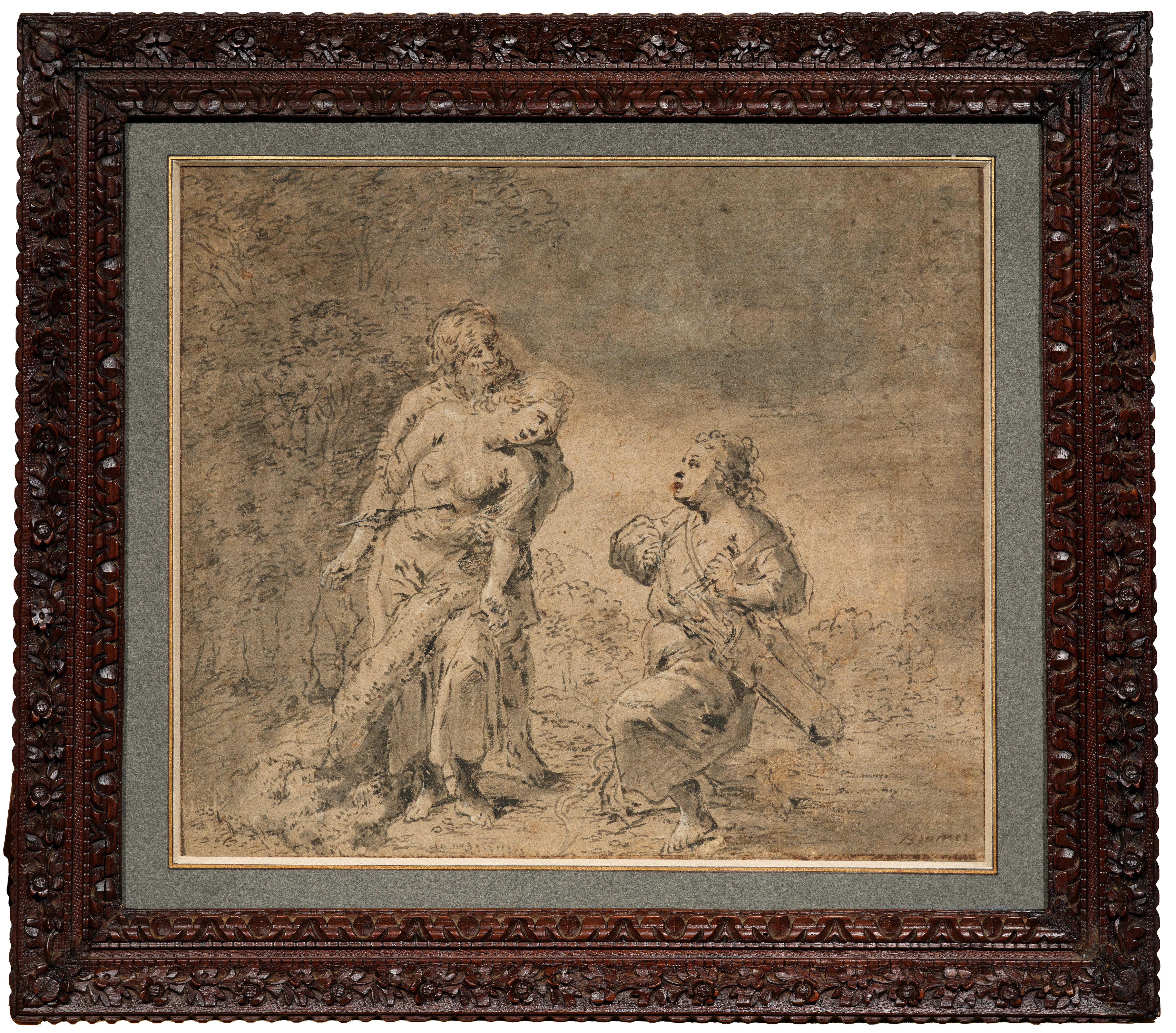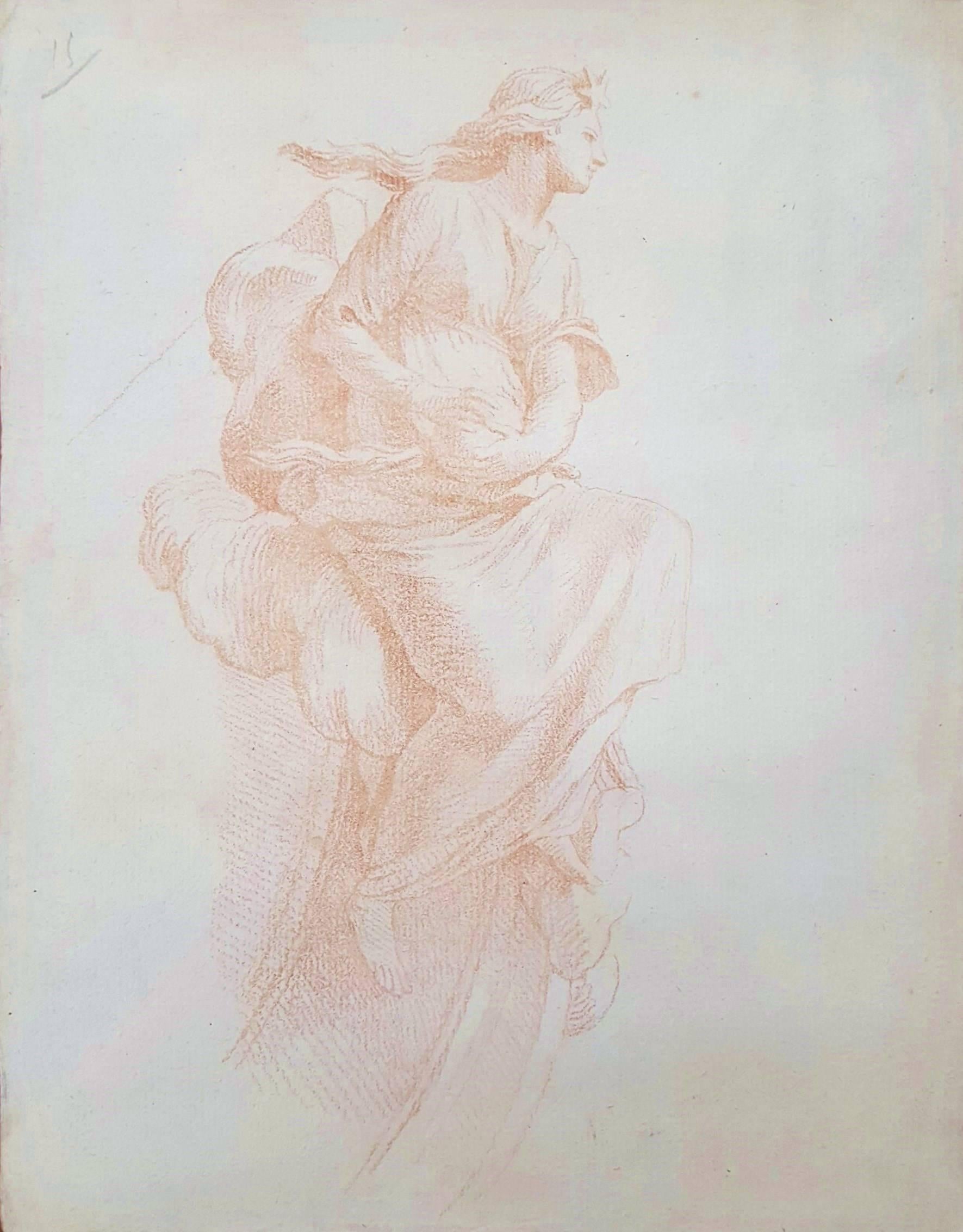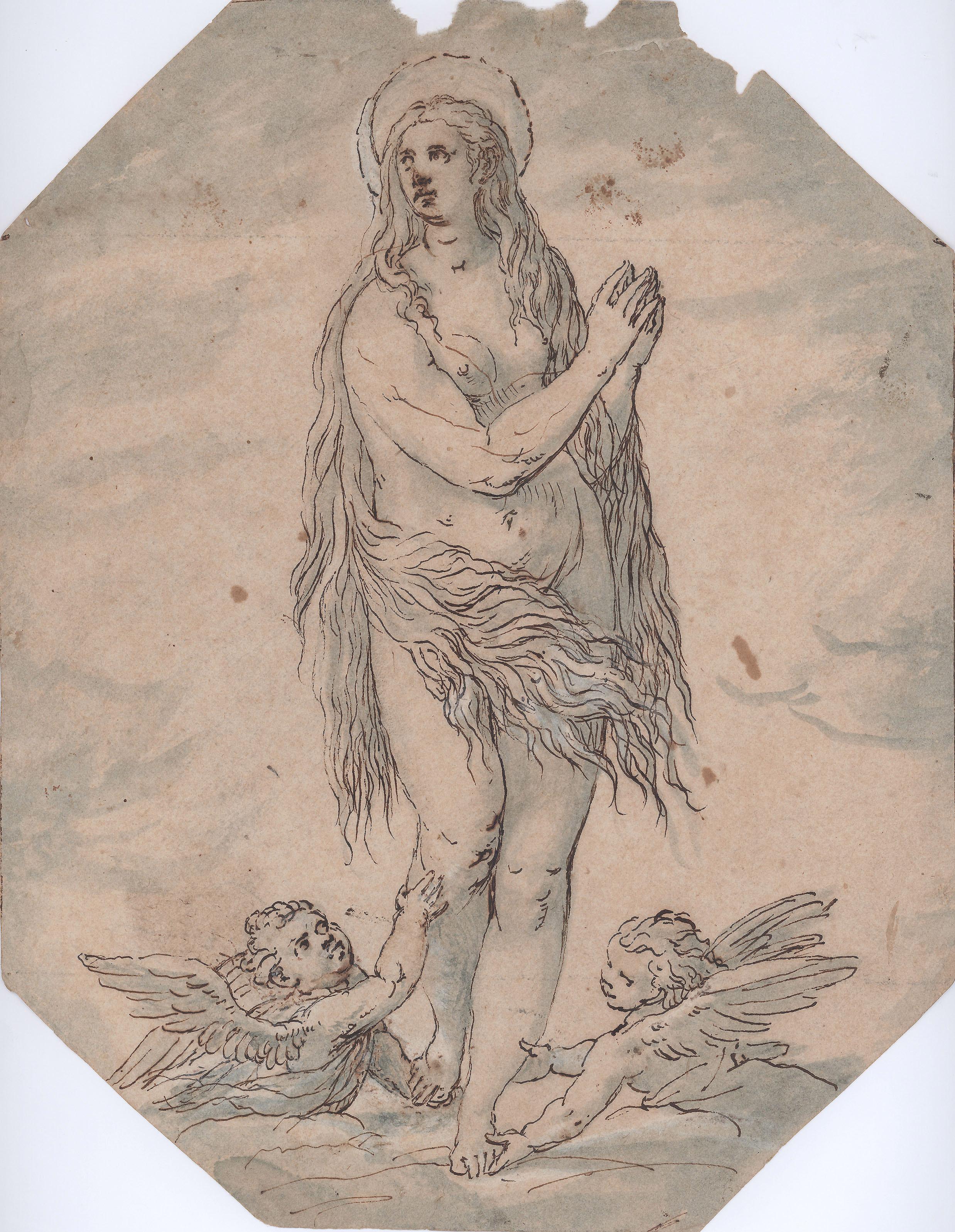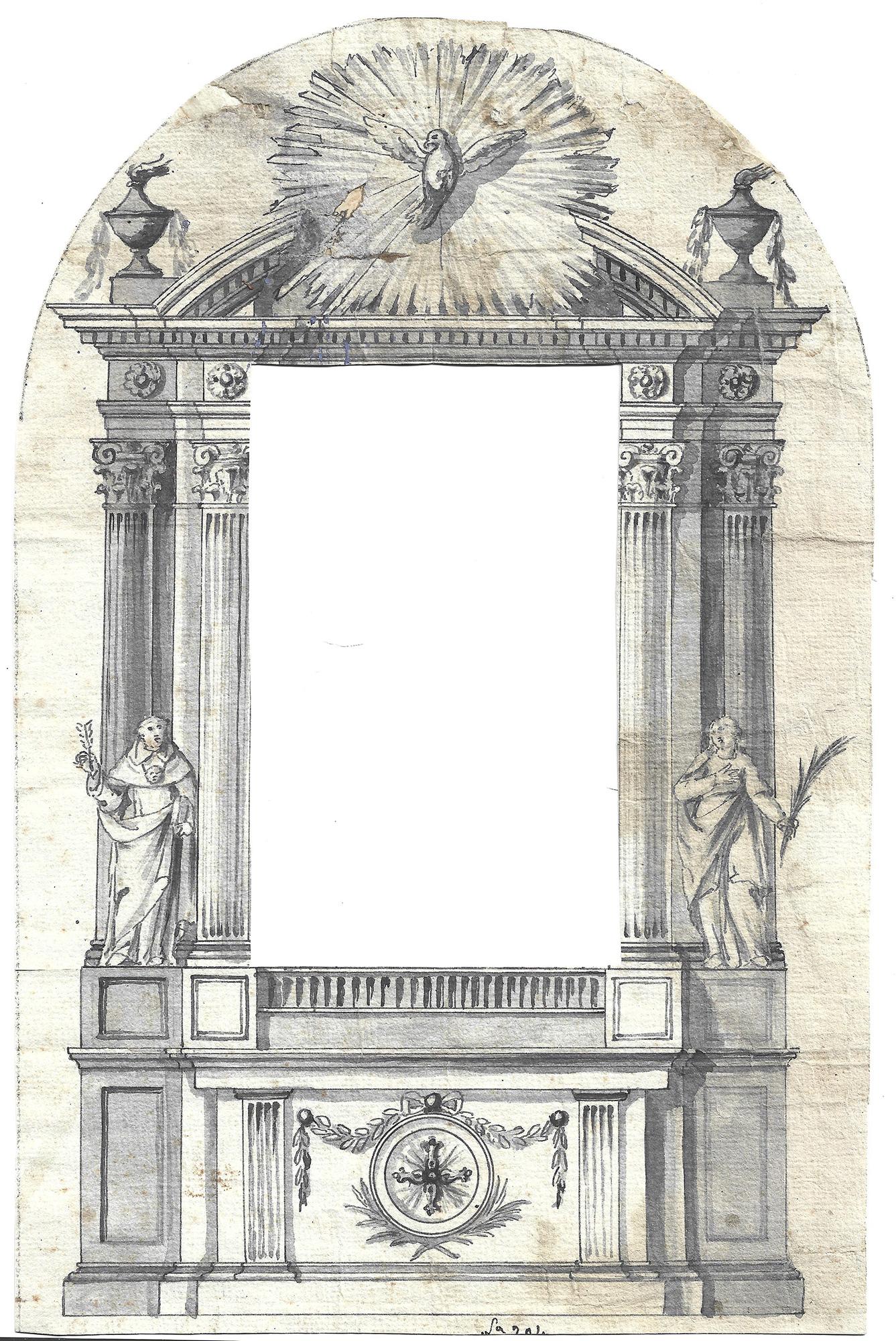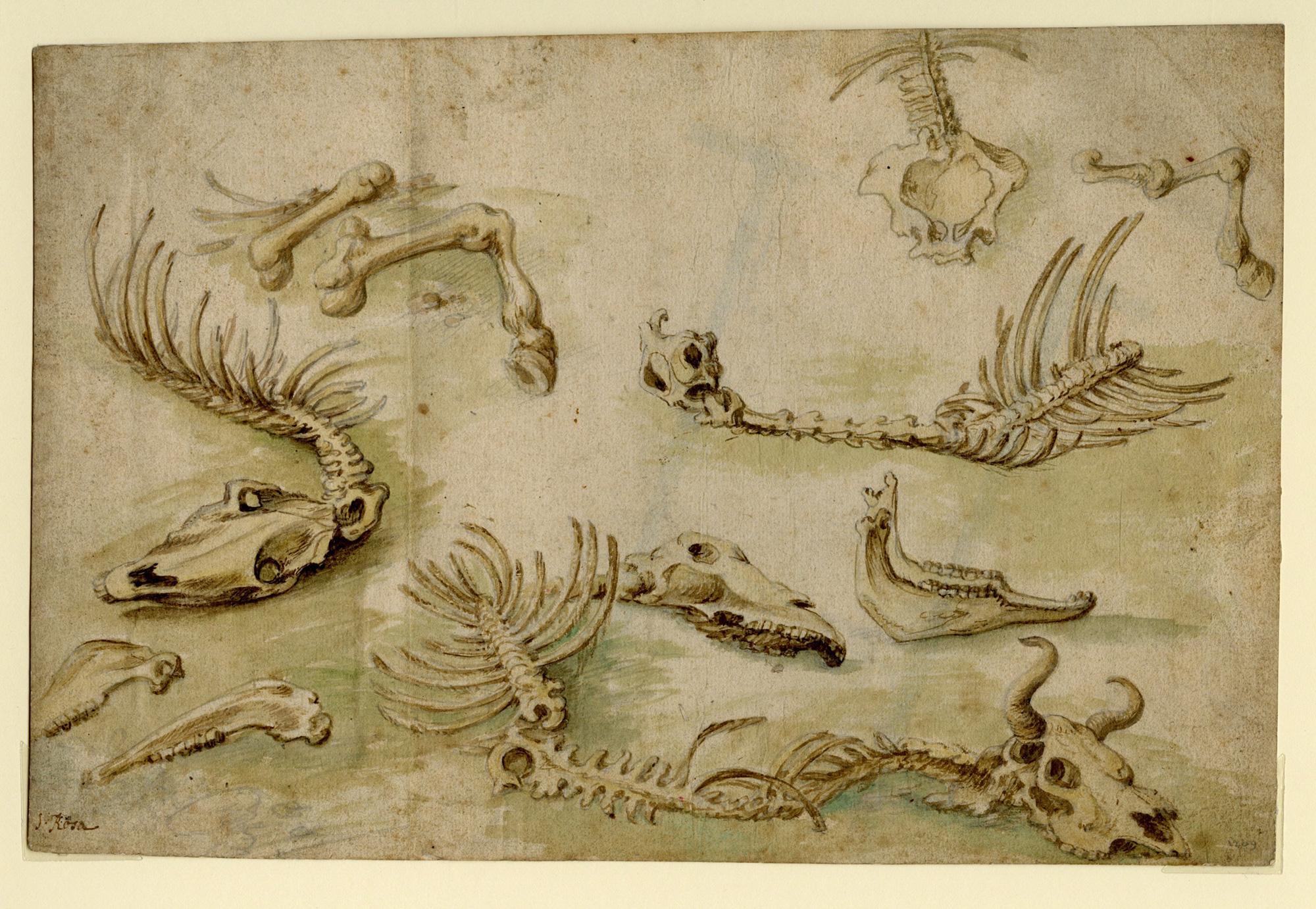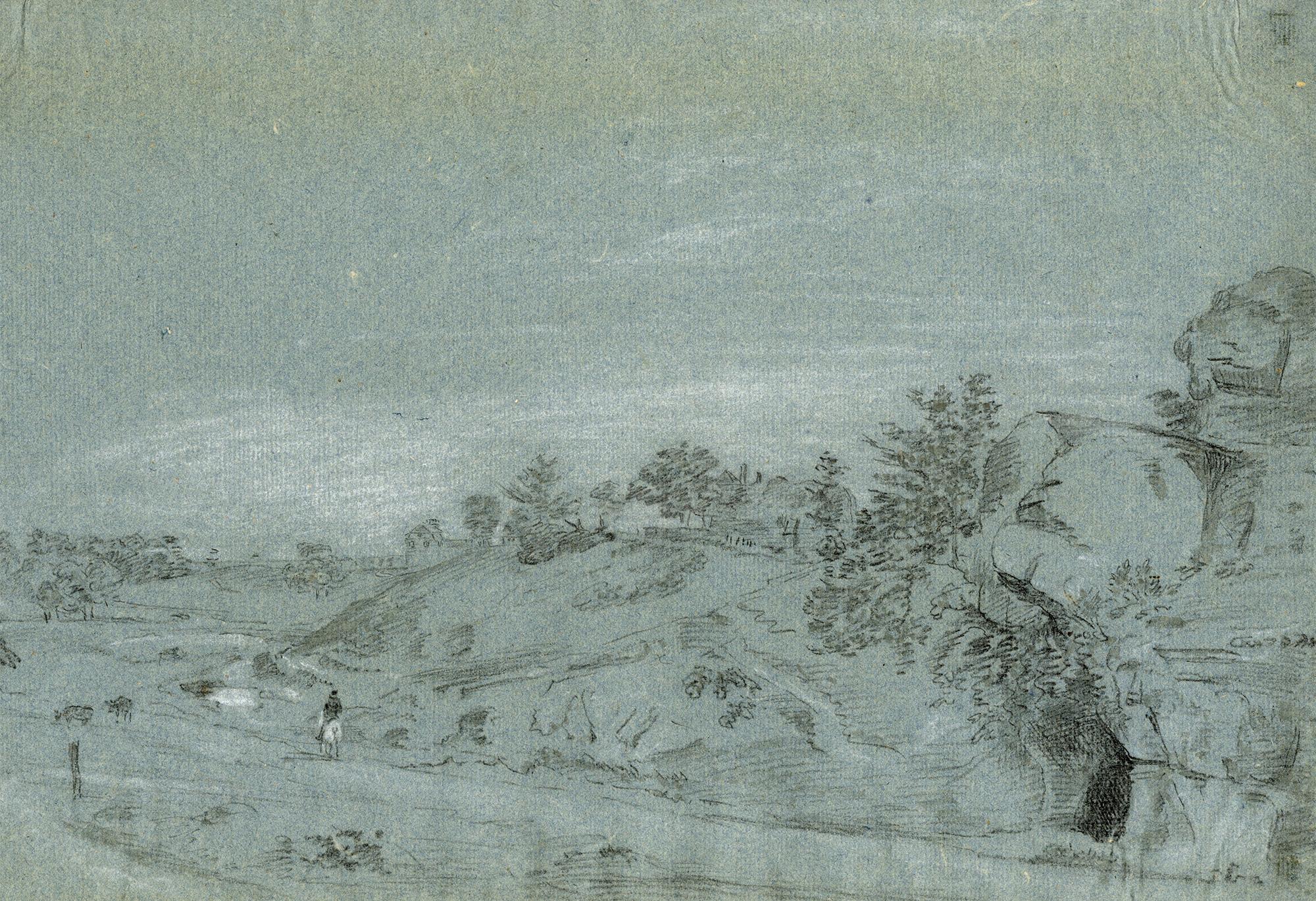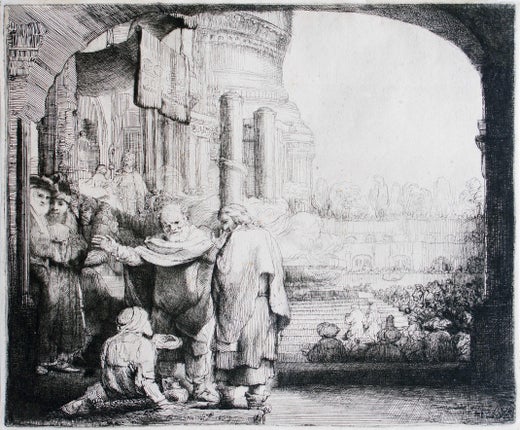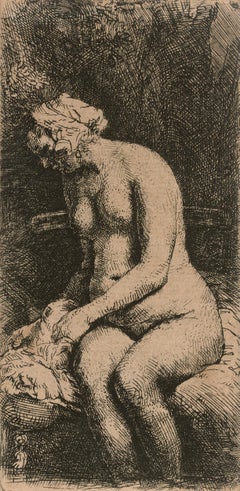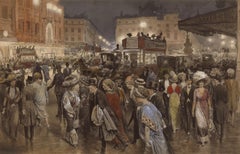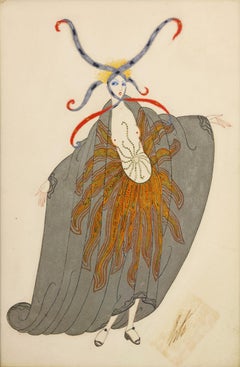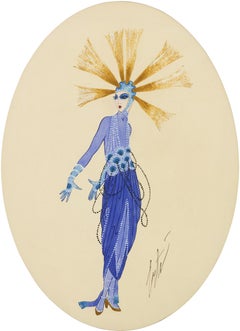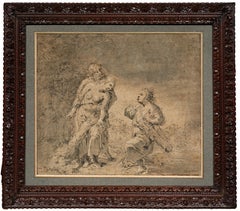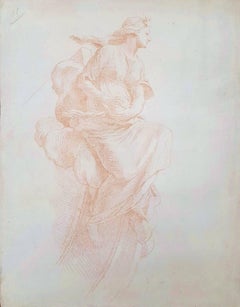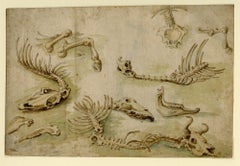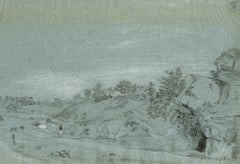Articles similaires à The Death of the Virgin by Rembrandt van Rijn
Vous voulez plus d'images ou de vidéos ?
Demander au vendeur plus d'images ou de vidéos
1 sur 9
Rembrandt van RijnThe Death of the Virgin by Rembrandt van Rijn1639
1639
À propos de cet article
Rembrandt van Rijn
1606-1669 Dutch
The Death of the Virgin
Etching and drypoint on laid paper
State II of V
Signed and dated "Rembrandt f. 1639" (lower left)
In The Death of the Virgin, Rembrandt engages with traditional iconography but approaches it through a markedly humanized lens. Departing from the more common portrayal of a youthful, idealized Virgin, he depicts Mary as aged, emphasizing the gravity of her final moments. Unlike earlier compositions that typically include only Apostles, Rembrandt broadens the scene to incorporate women and a physician who gently checks her pulse, elements that, while not drawn from canonical scripture, enrich the scene’s emotional and narrative realism. At 15 1/2” high, it is also a remarkably large etching by the artist, adding to its dramatic impact and rarity.
This emotionally rich scene unfolds within a shadowed, timbered chamber, its earthly gravity offset by a host of angels who hover above, delicately sketched in wisps of light. Rembrandt's handling of the etching needle is particularly free and expressive in this upper register, suggesting spiritual transcendence. Notably, he leaves visible the traces of earlier compositional decisions, such as the repositioned risers supporting the bed, offering rare insight into his creative process.
The son of a miller, Rembrandt van Rijn is believed to have been born in Leiden on July 15, 1606. He studied first at the Latin School and was then enrolled at the University of Leiden at the age of 14. He soon left to study art—first with a local master, Jacob van Swanenburch, and then, in Amsterdam, with Pieter Lastman, known for his historical paintings. Rembrandt was an exceptionally gifted student and mastered his art in a mere six months. Now 22 years old, he returned to Leiden and was soon so highly regarded that he was able to take students of his own.
Though known today primarily for his paintings, Rembrandt's fame spread outside the Netherlands thanks to his etchings. He made hundreds of etchings over the course of his career from 1626 until 1660, the year he was forced to sell his presses. He created etchings of a number of subjects, including self-portraits, biblical subjects, saints and allegories, and his work was avidly admired and collected, even during his lifetime.
Rembrandt’s masterful synthesis of narrative, technical virtuosity and spiritual intensity has secured The Death of the Virgin
Dated 1639
Etching: 15 1/4” high x 12 1/4” wide (38.74 x 31.12 cm)
Frame: 22 1/4” high x 18 1/4” wide x 1” deep (56.52 x 46.36 x 2.54 cm)
Provenance:
Private collection, the Netherlands
M.S. Rau, New Orleans
Literature:
Bartsch, Adam. Le Peintre-Graveur, Vol. 1. Vienna: Kunstverlag, 1803. No. 99
Hind, Arthur M. A Catalogue of Rembrandt’s Etchings. London: Methuen, 1923. No. 161, Third State (of V)
New Hollstein Dutch & Flemish Etchings, Engravings and Woodcuts 1450–1700: Rembrandt, ed. Erik Hinterding, Jaco Rutgers. Ouderkerk aan den IJssel: Sound & Vision Publishers, 2013. Vol. II, No. 39.173, Second State (of V)
- Créateur:Rembrandt van Rijn (1606 - 1669, Néerlandais)
- Année de création:1639
- Dimensions:Hauteur : 56,52 cm (22,25 po)Largeur : 46,36 cm (18,25 po)Profondeur : 2,54 cm (1 po)
- Support:
- Mouvement et style:
- Période:
- État:
- Adresse de la galerie:New Orleans, LA
- Numéro de référence:Vendeur : 32-10841stDibs : LU18616442922
Rembrandt van Rijn
Rembrandt est le peintre hollandais le plus influent du XVIIe siècle. Après des années de succès en tant que portraitiste, sa vie a été marquée par des difficultés financières et des tragédies personnelles. Il continue à peindre des portraits et à réaliser des gravures. Les portraits de ses contemporains, les Self-Portraits et les illustrations de scènes de la Bible sont considérés comme les plus grands triomphes créatifs de Rembrandt. Ses autoportraits forment une autobiographie unique et intime, dans laquelle l'artiste s'est sondé sans vanité et avec la plus grande sincérité. Comme de nombreux artistes de l'âge d'or néerlandais, tels que Jan Vermeer de Delft, Rembrandt était également un collectionneur et un marchand d'art passionné. Rembrandt ne s'est jamais rendu à l'étranger, mais il a été considérablement influencé par les œuvres des maîtres italiens et des artistes néerlandais qui avaient étudié en Italie, tels que Peters, les Caravagistes d'Utrecht, le Baroque flamand et Pierre Paul Rubens. La principale contribution de REMBRANDT à l'histoire de l'estampe est d'avoir transformé, avec Jacques Callot, le procédé de l'eau-forte d'une technique de reproduction relativement nouvelle en une véritable forme d'art. Sa réputation de plus grand graveur de l'histoire du médium a été établie de son vivant et n'a jamais été remise en question depuis. Peu de ses peintures ont quitté la République néerlandaise de son vivant, mais ses gravures ont circulé dans toute l'Europe, et sa réputation plus large a d'abord été fondée sur elles seules.
À propos du vendeur
5,0
Vendeur professionnel agréé
Chaque vendeur répond à des normes strictes en matière d'authenticité et de fiabilité
Établi en 1912
Vendeur 1stDibs depuis 2013
16 ventes sur 1stDibs
Temps de réponse habituel : 4 heures
- ExpéditionRecherche du devis...Expédition depuis : New Orleans, LA
- Politique des retours
Certaines parties de cette page ont été traduites automatiquement. 1stDibs ne garantit pas l'exactitude des traductions. L'anglais est la langue par défaut de ce site web.
Garantie d'authenticité
Bien qu'il soit peu probable que la situation se présente, dans le cas où vous rencontreriez un problème d'authenticité d'un article, contactez-nous dans un délai d'un an pour obtenir un remboursement intégral. DétailsGarantie de remboursement
Si votre article n'est pas conforme à la description, est endommagé pendant le transport ou ne vous est pas livré, contactez-nous sous 7 jours pour obtenir un remboursement intégral. DétailsAnnulation sous 24 heures
Vous disposez d'un délai de 24 heures pour annuler votre achat sans motif.Des vendeurs professionnels agréés
Nos vendeurs de renommée mondiale doivent respecter des normes strictes en matière de service et de qualité, afin de préserver l'intégrité de nos fiches produit.Garantie d'alignement des prix
Si vous constatez qu'un autre vendeur a mis en vente le même article à un prix inférieur sur un autre site, nous nous alignerons sur ce prix.Livraison en toute confiance à l'international
Notre réseau de transporteurs de premier ordre propose des options d'expédition spécialisées dans le monde entier, y compris des livraisons personnalisées.Plus d'articles de ce vendeur
Tout afficherWoman Bathing Her Feet in a Brook de Rembrandt van Rijn
Par Rembrandt van Rijn
Rembrandt van Rijn
1606-1669 Néerlandais
Femme se baignant les pieds dans un ruisseau
Gravure sur papier
New Hollstein's 309, deuxième état de II
Signé et daté "Rembrandt f. 1658"...
Catégorie
17ème siècle, Maîtres anciens, Dessins et aquarelles - Figuratif
Matériaux
Eau-forte, Papier
Piccadilly Circus de Fortunino Matania
Par Fortunino Matania
Fortunino Matania
1881-1963 Italien
Piccadilly Circus
Signé "Matania" (au centre, sur le bus)
Aquarelle et gouache sur papier
Cette exceptionnelle composition à l'aquarelle et à ...
Catégorie
Début du 20ème siècle, Dessins et aquarelles - Figuratif
Matériaux
Papier, Aquarelle, Gouache
L'Aurore boréale d'Erté
Par Erte - Romain de Tirtoff
Erté (Romain de Tirtoff)
1892-1990 Russe-Français
L'Aurore boréale
Signé "Erté" (en bas à droite)
Inscrit ---- (en verso)
Gouache sur papier
Dans cette gouache colorée, Erté dessi...
Catégorie
20ième siècle, Art déco, Dessins et aquarelles - Figuratif
Matériaux
Papier, Gouache
Mistinguett d'Erté
Par Erte - Romain de Tirtoff
Erté (Romain de Tirtoff)
1892-1990 Russe-Français
Mistinguett
Signé "Erté" (en bas à droite)
Estampillé "Composition originale" (au verso)
Gouache sur papier
Erté a conçu ce costu...
Catégorie
20ième siècle, Art déco, Dessins et aquarelles - Figuratif
Matériaux
Papier, Gouache
Caricatures de la reine Victoria et d'Edward VII par Sir Leslie Matthew Ward (Spy)
Sir Leslie Matthew Ward (alias Spy)
1851-1922 Britannique
Caricatures de la reine Victoria et d'Édouard VII
Fusain sur papier
Ces caricatures satiriques de la reine Victoria et d...
Catégorie
Début du 20ème siècle, Dessins et aquarelles - Figuratif
Matériaux
Papier, Fusain
Les Travestis By Erté
Par Erte - Romain de Tirtoff
Erté (Romain de Tirtoff)
1892-1990 Russe-Français
Les travestis
Signé "Erté" (en bas à droite)
Inscrit "No. 18.363 / Moi, j'aime le music-hall / Les Travestis" (au verso)
Gouache ...
Catégorie
20ième siècle, Art déco, Dessins et aquarelles - Figuratif
Matériaux
Papier, Gouache
Suggestions
Silvio et Dorinda, un dessin de Leonaert Bramer, premier maître de Vermeer
Ce dessin finement exécuté à la plume et au lavis est typique de l'œuvre de Leonaert Bramer, l'un des artistes les plus fascinants et les plus méconnus de la Hollande du XVIIe siècle...
Catégorie
années 1650, Maîtres anciens, Dessins et aquarelles - Figuratif
Matériaux
Encre, Gouache, Papier vergé, Stylo
La Femme Muse /// Symbolisme allégorique Romantic Old Masters European Drawing
Artistics : Inconnu (probablement français, 18e siècle)
Titre : "La Femme muse".
*Aucune signature trouvée
Circa : 1780
Moyen : Dessin original au pastel sur papier épais
Encadrement...
Catégorie
années 1780, Maîtres anciens, Dessins et aquarelles - Figuratif
Matériaux
Pastel, Papier vergé
1 200 $US Prix de vente
78 % de remise
Étude des os de cheval et de bœuf
Par Salvator Rosa
Graphite, lavis d'encre et aquarelle sur papier vergé fait à la main avec un grand filigrane ovoïde indiscernable représentant une grappe de raisin, 8 7/16 x 12 5/8 pouces (225 x 320...
Catégorie
Milieu du XVIIe siècle, Maîtres anciens, Dessins et aquarelles - Figuratif
Matériaux
Encre, Papier fait main, Papier vergé, Graphite
Chez Tunbridge Well
Par Agostino Aglio
Crayon noir et mine de plomb avec rehauts de blanc sur papier vergé bleu fait à la main. Collé aux quatre coins à un support d'époque, sur lequel le titre et une date illisible (peut...
Catégorie
Début du XIXe siècle, Maîtres anciens, Dessins et aquarelles - Paysage
Matériaux
Crayon de couleur, Papier fait main, Papier vergé, Crayon de couleur, Gr...
Mercurio / Mercure
Un joli et ancien dessin du dieu romain Mercure.
Plume et encre brune sur papier vergé crème, avec un filigrane partiel de la couronne et du bouclier, 7 1/4 x 4 7/8 pouces (184x 123 ...
Catégorie
Milieu du XVIIIe siècle, Maîtres anciens, Dessins et aquarelles - Figuratif
Matériaux
Encre, Papier fait main, Papier vergé
The Assumption de Marie-Madeleine, école italienne, 16e siècle
Encre brunâtre et lavis d'encre grisâtre avec rehauts de blanc sur papier vergé crème fait main, 10 5/8 x 8 1/4 pouces (267 x 208 mm)(matrice). Petites pertes éparses sur le bord sup...
Catégorie
XVIe siècle, Maîtres anciens, Dessins et aquarelles - Figuratif
Matériaux
Encre, Papier fait main, Papier vergé
